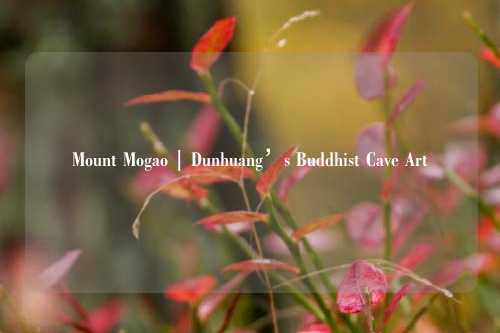Mount Mogao | Dunhuang’s Buddhist Cave Art
Discover the mesmerizing world of Dunhuang's Buddhist Cave Art, where history and spirituality converge. Explore the artistic treasures of Mount Mogao, a UNESCO World Heritage site, and embark on a journey through time on the ancient Silk Road.
The Timeless Odyssey of Dunhuang

Nestled in theGobi Desert, Dunhuang stands as a sentinel of history, a city where the whispers of ancient traders and monks still resonate. Once a bustling hub on the Silk Road, Dunhuang is now a sanctuary of heritage. At its heart lies Mount Mogao, a series of cave temples that have witnessed over a millennium of artistic evolution.
The construction of these caves began in 366 AD under the guidance of a monk named Le Zun. fleeing persecution, Le Zun found solace in the cliffs of Mount Mogao, carving the first grotto as a place of meditation and prayer. This modest beginning would evolve into a grand repository of Buddhist art, attracting pilgrims, artists, and scholars from across Asia.
Over centuries, the caves were expanded and adorned by successive dynasties, each leaving its mark. The Sui and Tang dynasties saw a golden age of artistic flourishing, with patrons contributing to the grandeur of the caves. The cave numbering 16, or the "Palace of the Great Hero," is a testament to this period, featuring carvings and vibrant murals that depict the splendor of the Tang era.
The caves are a mosaic of influences, reflecting the melting pot of cultures along the Silk Road. Indian, Persian, and Chinese artistic styles harmonize in a symphony of forms. Statues of the Buddha, serene and ethereal, flank The walls, while scenes of heavenly realms and earthly nirvana captivate the viewer.
Artistry and Preservation in Eternity
The artistic legacy of Dunhuang is a testament to the ingenuity and devotion of ancient artisans. The techniques employed are extraordinary, with layers of gesso and mineral pigments creating a luminous effect that has endured thetest of time. These murals, often depicting the life of the Buddha and scenes from Buddhist scripture, serve as visual narratives of belief and transformation.
Among the most famous depictions is the "Thousand Buddha Caves," where an assembly of Buddhas symbolizes the path to enlightenment. The Cave of the Kings, supported entirely by a single pillar, showcases the skill and vision of its builders.
Conservation efforts are paramount in safeguarding this fragile art. Natural elements and human intervention threaten the integrity of the caves, but modern techniques aim to preserve these treasures. The Dunhuang Academy, dedicated to the protection and study of the site, leads these efforts, ensuring that future generations can continue to draw inspiration from Mount Mogao.
The influence of Dunhuang extends beyond its walls, shaping Chinese art and culture. The vibrant palette and dynamic forms found in the caves inspired later Chinese painting, bridging the sacred and the secular. Dunhuang's art continues to be a source of creativity and reflection, its messages spanning across the ages.
, Dunhuang's Buddhist Cave Art is more than a historical curiosity; it is a living bridge to our past, offering insights into the spiritual quests and exchanges of bygone eras. As we stand in the shadow of Mount Mogao, we are reminded of the enduring power of art to transcend time and place.
















